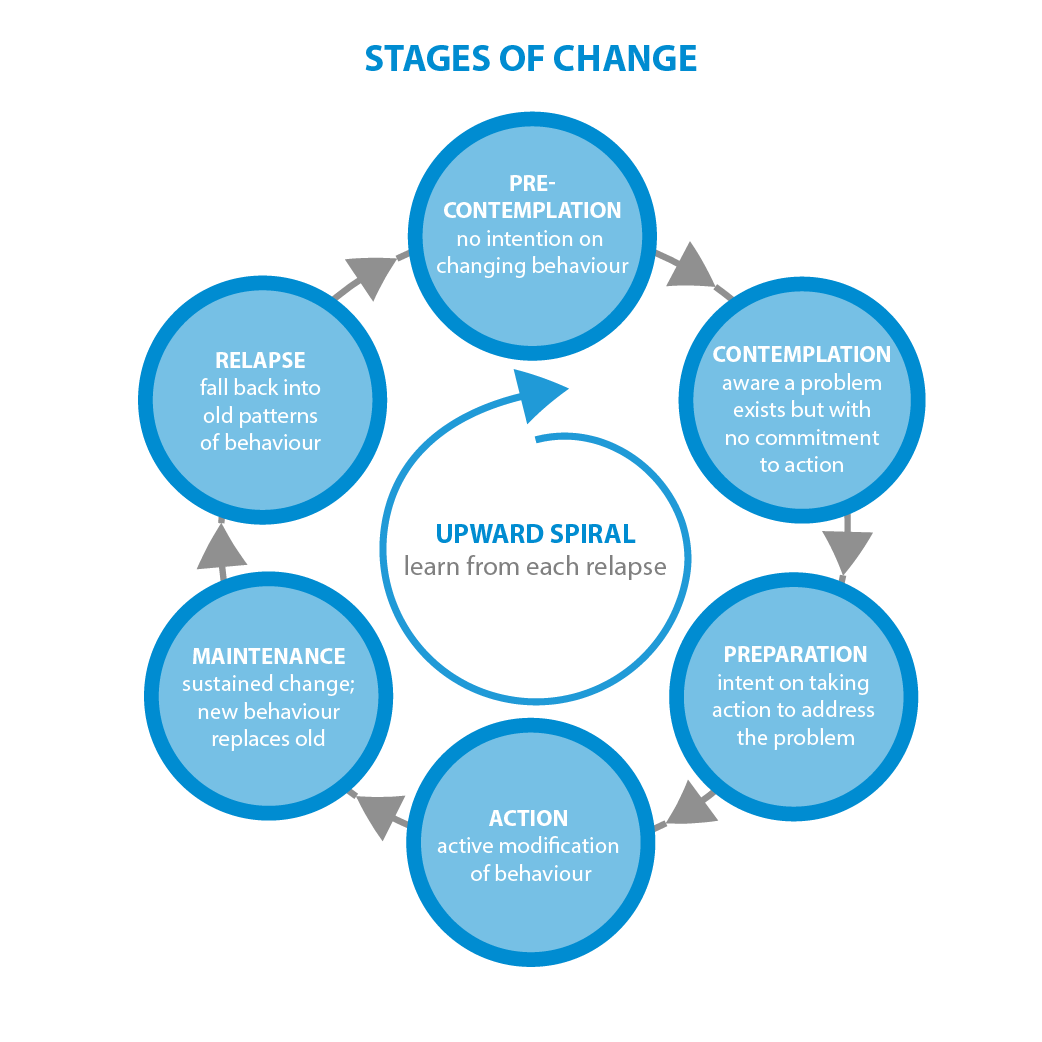Stages of Change, also known as the “transtheoretical model” is a means of examining the various stages that someone goes through while dealing with an addiction and working to change their addictive behaviour. The originators of the theory James Prochaska and Carlo DiClemente also identify 10 processes of change, which are used throughout the stages.

Most people who are trying to end an addiction or change a specific behaviour go through the various steps in the Stages of Change model many times before they are able to successfully end their addictive behavior. Obviously, the young person may not know about or understand the model himself or herself, but the staff use it to help evaluate an individual’s readiness for change, so that appropriate interventions are used as effectively as possible. Prochaska and DiClemente state, “we have determined that efficient self-change depends on doing the right things (processes) at the right time (stages)”.
“So the pre-contemplative is when a youth is not quite ready to come forward and have insight about their addiction. So our goal there is to give them as much information as possible, around addiction services and discussion around—‘This is the behaviour we’re seeing is going on.’ Contemplative, we’re starting to see them [say], ‘Ok, maybe I do have an addiction issue’ and at that point we start saying ‘Are you ready to get connected to work on these issues?’ Move into Action, and then Maintenance and then we see the Termination. Any time within there we can see a relapse, so we’re always watching out for that. The youth here, when we work with them we can definitely see when there’s some struggles going on. Our goal is to get that relationship going in order for them to come to us saying, ‘I’m struggling right now.’ And then we work on, ‘Well what do you need?’ Most of the time some of the youth already have the connections, but they’ve disengaged, so it’s just getting those connections back.” — Lisa Ronaldson, Case Manager, Covenant House Vancouver.
Both locations embed their evaluation methods in this theoretical approach. The Outcomes Star and The Youth Engagement Scale (discussed in the Evaluation chapter) tie in this theory to the way in which a youth’s progress is measured. This means that program milestones, youth engagement markers and other indicators of success are not based only in the need for evaluation measures but in a concept that explains and elaborates upon a youth’s behaviour. It allows staff to more fully understand why a youth does something, what that behaviour would look like at each stage and to guide the youth in a more positive direction.
While the youth themselves may not always be aware of the theoretical models being used, they are impacted by them. In talking about relationships with staff Kevin says,
“For me, I don’t really have too many people out here, and just having someone that I could look up to, someone who understands some of my life experiences, and yeah, obviously judgment is the biggest thing. Like, you know, staff that [says] ‘Hey, you know what, you made a mistake, that’s fine. We’re not here to judge you, we’re just here to help you’.” — “Kevin”, 26, former ROP participant, Covenant House Vancouver.

